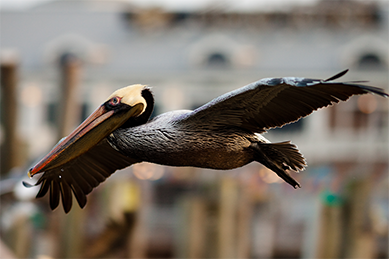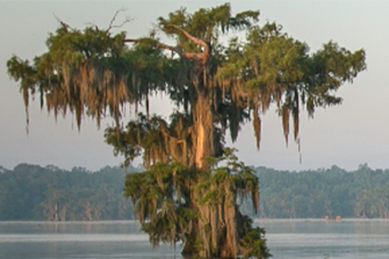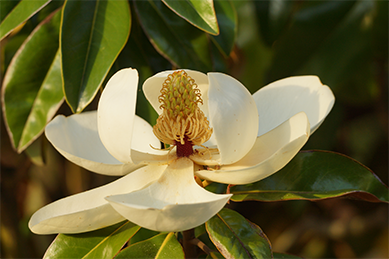State Symbols
 |
State Bird The brown pelican is Louisiana's official bird. Pelicans are famous for their large bill, the lower portion of which has a pouch that can be greatly extended. |
 |
State Tree The state tree is the bald cypress. Its shape, which varies from columnar to conical (bottle-shaped), depends greatly on the amount and duration of flooding in the area. The bark is reddish-brown, fibrous, thin, and divided into small, flat ridges and shallow furrows. Leaves of the cypress tree spread in flat planes in the feathery pattern on its branches. |
 |
State Dog The Catahoula Leopard Dog is the official state dog. It is a cross of the domestic dog the Indians of the Catahoula Lake region raised and the Spanish "war dog" that came through the area in the early 1500s. The Catahoula has unusual glassy eyes, webbed feet, a spotted coat, and is gentle with children. |
 |
State Flower The large, creamy-white bloom of the magnolia tree was designated the state flower in 1900 because of its abundance throughout the state. The magnolia is an evergreen and the flower is unusually fragrant. |
 |
State Seal The state seal was adopted in 1902 and features a pelican tearing flesh from its own breast to feed its young. The pelican and its three young are surrounded by the Louisiana motto, "Union, Justice, Confidence." The state seal is not currently available in vector format, but three high resolution versions of the state seal are available: |
 |
State Flag The Louisiana flag contains a crest centered on a blue field. The crest consists of a nest bearing three chicks, a mother pelican vulning herself with her head turned to the viewer's right and displaying three drops of blood on her breast. Beneath the nest a white banner bears the state motto "Union Justice Confidence." You can obtain a high resolution image of the state flag on the Secretary of State's site. |
 |
State Fruit The state fruit is the Louisiana strawberry. More than 380 acres of strawberries are harvested every year in Louisiana. The strawberry was designated as the state fruit of Louisiana twice — for one year in 1983 and permanently in 2001. |


